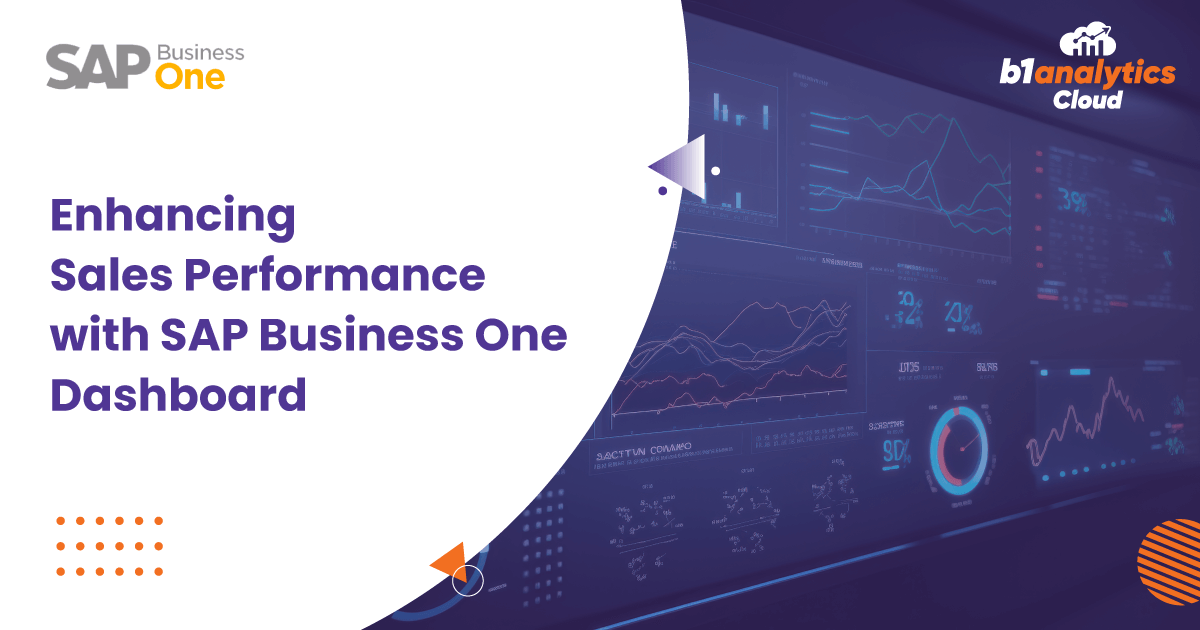Enhancing Sales Performance with SAP Business One Dashboard

In the ever-evolving landscape of business management solutions, SAP Business One stands out as a comprehensive tool designed to streamline operations and drive growth. Within this robust ecosystem, the sales dashboard emerges as a pivotal component, offering businesses a centralized hub to monitor, analyze, and optimize sales performance. From tracking key metrics to facilitating informed decision-making, the sales dashboard within SAP Business One empowers organizations to unlock their full potential in driving revenue and fostering customer satisfaction.
Understanding the Sales Dashboard
At its core, the sales dashboard serves as a dynamic visualization tool, providing real-time insights into various facets of the sales process. Seamlessly integrated within SAP Business One, this feature aggregates data from multiple sources, including sales orders, invoices, customer interactions, and inventory levels. By presenting this information in a visually engaging format, the dashboard offers stakeholders a comprehensive view of sales performance, enabling them to identify trends, spot opportunities, and address challenges proactively.
Key Features and Functionalities
The sales dashboard within SAP Business One boasts a plethora of features and functionalities designed to enhance efficiency and effectiveness across the sales cycle. Here are some key elements:
Real-Time Analytics
With real-time data updates, the dashboard provides a current snapshot of sales performance, enabling users to make timely decisions and respond swiftly to market dynamics.
Customizable KPIs
Users can tailor the dashboard to display key performance indicators (KPIs) relevant to their business goals, such as sales revenue, order fulfillment rate, customer acquisition cost, and sales pipeline velocity.
Visualizations
Through intuitive charts, graphs, and heatmaps, the dashboard transforms complex data into digestible insights, facilitating quick comprehension and actionable interpretation.
Drill-Down Capabilities
Users can drill down into specific data points to gain deeper insights into sales trends, customer behaviors, product performance, and regional variations, empowering informed decision-making at every level of the organization.
Forecasting and Predictive Analytics
Leveraging historical data and advanced analytics algorithms, the dashboard enables businesses to forecast sales trends, identify potential risks, and capitalize on emerging opportunities.
Integration with CRM
Seamless integration with SAP Business One’s customer relationship management (CRM) module ensures a holistic view of customer interactions, enabling sales teams to nurture leads, manage accounts, and track sales activities more effectively.
Mobile Accessibility: The dashboard is accessible via mobile devices, empowering sales teams to stay connected and informed on the go, whether they’re in the office, on the field, or attending client meetings.
Benefits of the Sales Dashboard
The sales dashboard within SAP Business One offers a myriad of benefits that translate into tangible advantages for businesses of all sizes and industries:
Improved Decision-Making
By providing actionable insights in real-time, the dashboard equips decision-makers with the information they need to devise strategies, allocate resources, and prioritize initiatives that drive sales growth and profitability.
Enhanced Visibility
With a centralized hub for sales data, the dashboard enhances visibility across the organization, fostering transparency, accountability, and collaboration among sales teams, managers, and executives.
Increased Productivity
By automating data aggregation and visualization, the dashboard eliminates manual reporting tasks, freeing up valuable time for sales teams to focus on revenue-generating activities such as prospecting, client engagement, and deal closure.
Optimized Sales Performance
Armed with insights from the dashboard, sales teams can identify cross-selling and upselling opportunities, tailor their approach to individual customers, and address bottlenecks in the sales process, ultimately driving higher conversion rates and customer satisfaction.
Strategic Alignment
The dashboard aligns sales efforts with broader organizational objectives, enabling businesses to track progress towards sales targets, monitor the effectiveness of marketing campaigns, and adjust strategies in response to market dynamics.
Case Study: Real-World Impact
To illustrate the tangible benefits of the sales dashboard within SAP Business One, let’s consider a hypothetical scenario:
ABC Manufacturing, a mid-sized manufacturing company, implemented SAP Business One to streamline its operations and accelerate growth. Leveraging the sales dashboard, ABC Manufacturing gained unprecedented visibility into its sales performance across regions, product lines, and customer segments. By analyzing historical data and identifying sales trends, the company was able to optimize inventory levels, forecast demand more accurately, and align production schedules with customer demand.
Moreover, the dashboard enabled ABC Manufacturing to identify underperforming sales channels and focus its resources on high-potential markets, resulting in a 15% increase in sales revenue within the first year of implementation. The ability to track sales pipeline velocity and monitor key conversion metrics allowed the company to identify areas for process improvement and implement targeted sales training programs, leading to a 20% improvement in sales productivity.
Conclusion
In today’s competitive business landscape, organizations need tools that empower them to stay agile, responsive, and competitive. The sales dashboard within SAP Business One emerges as a game-changer, offering businesses the visibility, insights, and agility they need to drive sales growth, enhance customer satisfaction, and stay ahead of the curve. By leveraging real-time analytics, customizable KPIs, and intuitive visualizations, businesses can transform their sales operations, optimize performance, and unlock new opportunities for success in the digital age.
